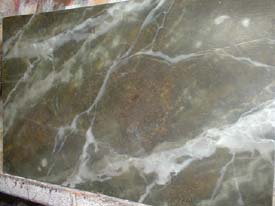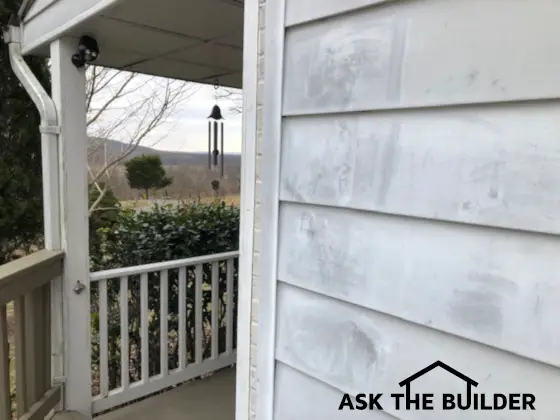Transforming Dark Paneling
There still are many houses and basement family rooms out there that have dark paneling. It was the rage back in the late '60s and early '70s but times have changed. So should the paneling. There is no need to rip it out, let's just lighten it up!
The following advice is given by Gary Lord, probably one of the top faux painters in the USA today. You can see excellent examples of his work in his book Great Paint Finishes for a Gorgeous Home. The color photos in the book are simply magnificent. You can easily see just how to create 12 different faux finishing projects by following his step-by-step instructions.
Here is what Gary says to do to transform dark paneling into a light and airy look.
Getting Ready
The paneling needs to be clean, wax-free and free of any gloss. Washing the paneling with a soap and water solution will surely get it clean. Wash multiple times if necessary until the rinse water is clean. If the paneling has been waxed use a standard wax remover to eliminate wax films. Factory or field applied gloss finishes can be dulled by using de-glossing liquids found at any top quality paint store. Simply follow directions.
Want a faux finish but don't have time to do it yourself? Find the professional painters by using my Interior Painting & Staining Checklist. I offer a 100% Money Back Guarantee.
Field Mixed Stain
The stain for this job is going to be mixed by you! You are going to buy oil based paint that is tinted to a shade that you want the paneling to look like. Take a one gallon empty can and pour one quart of the paint into it. Add 1/2 to 3/4 quart of paint thinner to the paint and mix. If the wood paneling is very rough and porous, use less thinner.
Applying the Stain
Use an oil brush and apply the stain mixture to the vertical grooves (if any) of the paneling. Only apply it to two or three grooves. Now brush on the stain to the three vertical panels adjacent to the grooves. Keep the stain coverage as even as possible.
Use old rags to wipe down the paneling. Some of the dark color may show through. Do not be alarmed. The wall will very likely dry slightly lighter than what you see. You need to work fast and apply stain to the dark paneling next to the area you just finished as soon as possible. You basically want to keep a wet edge of stain at all times.
Do not stop working until you hit a corner or do the entire room. You can have big problems if you stop halfway down a wall.
The process works best if you have a helper. One person can apply the stain while the helper wipes it down. Step back about 10 feet on a regular basis and check your work.
Gary Lord's Tips:
- If you work by yourself, only do three or four boards at a time. The stain can dry and you will have a botched job.
- Don't go back and touch up an area. It can create a light spot in the finish.
- Watch for runs and drips!
- Practice in a closet or on scrap if possible. Stand back from the work eight to ten feet to see the realistic look.
Related Articles: Faux Finishing, Faux Finishing Basics, Faux Finishing Tools, Faux Finishing Books, Faux Painting
Column B254

